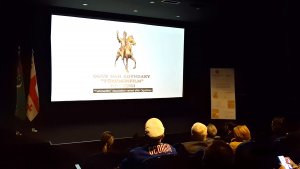Traces of an ancient settlement were discovered by builders in the North-West of Ashgabat in the area of a residential complex under construction of the 16th stage, the state news Agency of Turkmenistan reports.
At a depth of more than two meters, the bucket of the excavator accidentally touched the wall of a huge ceramic vessel. As it turned out, this is a hum – a ceramic amphora about one-meter high.
Construction work was immediately interrupted and, according to the established rules, information about the find was received by the National administration for the protection, study and restoration of historical and cultural monuments. A team of archaeologists arrived at the site and examined the pit and excavated the surrounding area.
As a result, two more humans of excellent preservation were identified. All of them were located in one room of a building that existed on this site many centuries ago. Scientists have determined the estimated age and historical and cultural affiliation of the finds-they turned out to be Parthian hums for storing grain or liquid: chemical analysis of deposits on the inner walls of vessels will help to clarify the purpose of the products.
Focusing on the new artefacts discovered within the borders of Ashgabat, President Gurbanguly Berdimuhamedov at a meeting of the Cabinet of Ministers of Turkmenistan stressed that they can significantly complement the already established ideas of scientists and historians about the stages of formation of the Turkmen capital and ordered that after identifying, studying and restoring the finds, they should be presented to the General public, and then transferred to the country's museums.













